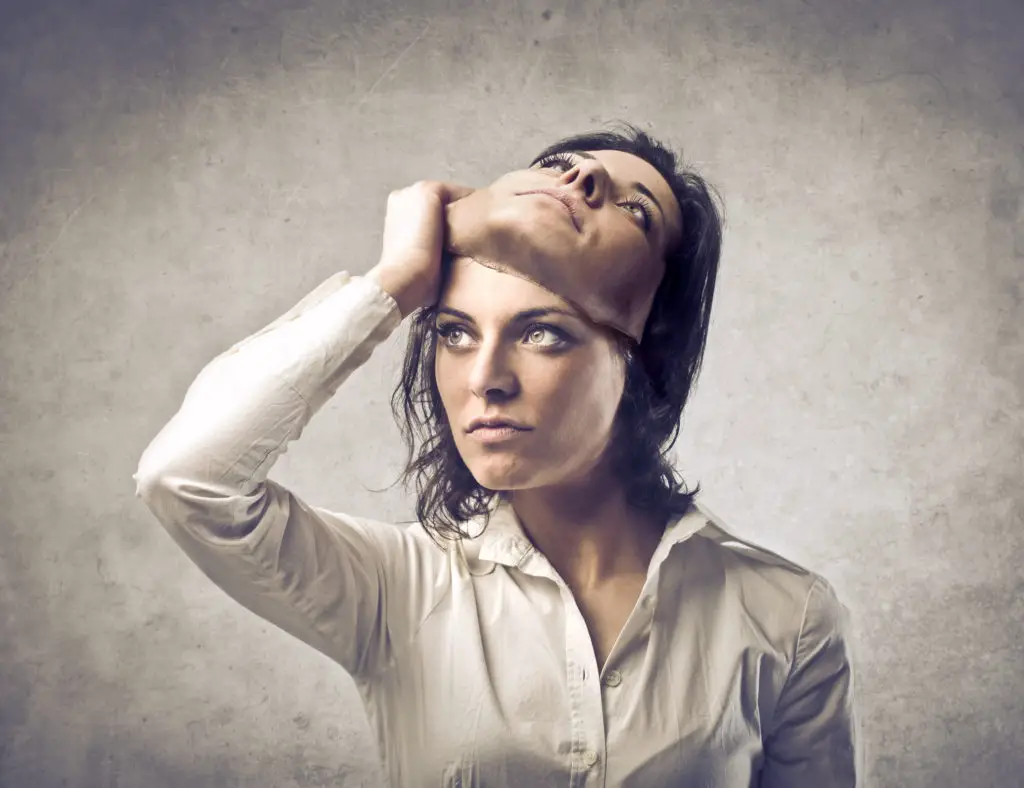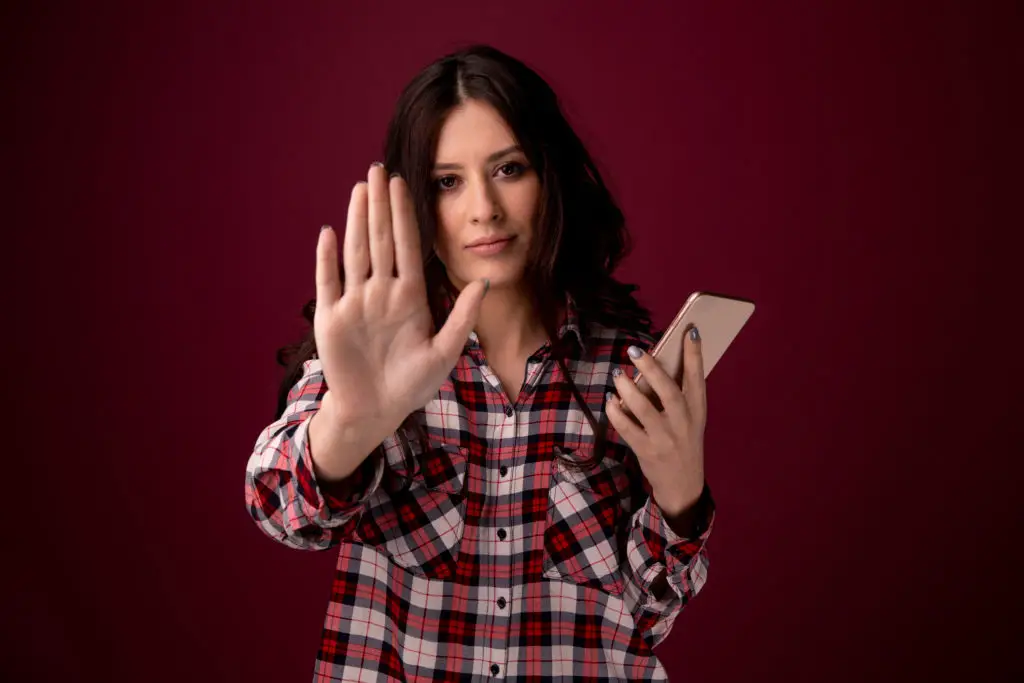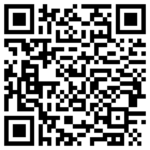Care to guess how many fake profile photos are used on social media accounts? Every 3 months, more than 1 billion fake Facebook accounts are removed! Research also shows that 1 in 10 online dating profiles is fake. But, having a fake profile picture has some legitimate uses for privacy. So, how do you create a fake profile photo?
To create fake profile pictures, use an AI-based face generator or take your own photograph obscuring your face. Some users scrape social media accounts which is unethical and potentially illegal. Other users make use of stock photos.
You have a few options for hiding your identity for security and privacy. Later, we have some tips to help you spot dubious profiles.

How To Get or Create Fake Profile Pictures
If you are uncomfortable using a real picture on a social network or an online dating site, you have a few options:
Use AI To Generate Photos
The online tool, This Person Does Not Exist (TPDNE), is the best place to get a high-resolution fake profile picture. The images are unique (as I confirmed using the tips later on) and are of people who never really existed.
Once you land on the site, you’re welcomed with the first randomly created image generated by artificial intelligence. If you refresh the site, a new photograph is generated.
The platform uses research by chip designer Nvidia to generate thousands of fake images.
The algorithm behind it uses a dataset of images of real people, and through a generative adversarial network (GAN), two machine learning neural networks work against one another to fabricate a composite portrait. The process blends features from the input images to produce a randomized, albeit quite convincing, fake profile picture.
I found two problems when using this method to generate a fake avatar in testing.
Problem 1: Only One Pose
The primary downside of this technique is that you only get a single photo of the generated person. It’s not yet possible to have multiple, varied poses of the same character. This means your fake profile picture will be the same across all online channels.
This may be fine for Twitter, Google, Quora, or any other online forum showing only a single photo. This option may also allow users to bypass the facial recognition step when signing up for Facebook accounts (I advise against this for multiple reasons).
This tool is not ideal if you need several images of the same person.
Problem 2: Reverse Image Search Can Find Matches
The second problem I found was that sometimes reverse image searches find some source images.
Take a look at this output from TPDNE.

Several results were found when I fed it into TinEye image search.

Ideally, you don’t want any potential matches to your fake profile picture. A better way to create an account avatar is to snap your own profile photo.
Take Your Own Photograph and Obscure it
Instead of going through all the trouble of finding a generated photo, have you considered taking your own shot? While images are important on social media, they do not have to include your face.
Of course, today’s smartphones take great photos. On top of it, the availability of excellent photo manipulation software makes quick edits super easy. Not only can you elevate your profile picture for social media or online dating, but you can also obscure and modify your photos for privacy.
You can also take your avatar shot in an artsy way or from a novel angle obscuring your face.
Use A Pseudonym With Your Real Profile Picture
Another good alternative is to pair your real visage with falsified profile data.
For instance, you can use different full names, personas, a different writing style, a burner phone number, a nearby city, and slightly varied birthdates.
This accomplishes two unique advantages:
- Compartmentalization: You can assign different names and pseudonymous information to each social network giving you the ability to pinpoint where a data leak occurs
- Multiple Profile Photos: Since they’re your photos, you can get new photos in a variety of poses or situations you want
Note: If you’re using this idea for a dating profile, you might want to be a bit honest because you intend to meet with your match. You wouldn’t want to start a relationship off on the wrong foot.
But remember that anyone can use facial-recognition software to identify the real you. What we’re doing is spreading multiple possible identities to throw off tracking.
Stop Using Toxic Social Media
Some social networks or dating services require you to upload a profile photo to sign up. While the intention is to cut down on fake accounts, this also causes mistrust for those using the services, especially for you, the privacy-conscious reader.
Avoiding social media makes you less vulnerable to myriad adverse effects on your digital and real-world life.
Yes, social media and the web offer the best way to keep in touch with family and friends, but taking a break from your social accounts allows you to concentrate on real-world interactions.
But, for those social-type humans that absolutely must be connected, take a look at alternative social networks where your privacy isn’t degraded with each new friend request.
Switch To A Privacy-Respecting Social Network Alternative
Check out these privacy-respecting social networks, which do not require a profile pic or personally identifiable information (PII) to sign up. There are plenty of alternatives that mirror their Big Tech offerings:
- Bookwym social instead of Good Reads
- Lemmy instead of Reddit
- Lbry or PeerTube instead of Youtube
- Pixelfed instead of Instagram
- Write.as instead of Medium
- Mastodon instead of Twitter or Facebook
Feel free to post social media to these social networks, but don’t feel like you have to.

How NOT To Get Fake Profile Photos
Now that you know some options on how to protect your privacy correctly. Let’s talk about where you should not get fake profile pictures.
Do Not Use Stock Photos
A while back, a friend got excited, having been matched up with an attractive partner on a dating site. She told him that she lived in a suburb nearby and worked as an angel investor. The connection was going well, but something was off.
That prompted him to do a Google Reverse Image search on her photo. And boom, he found her, the charming angel investor…in Getty Stock photos. Yes, the individual he was talking to was a phony.
Now, though this wasn’t the first time he was chatting with a stock image, the catfishing phenomenon is fascinating. Why should you use a fake photo to chat with others online?
Maybe it’s because you do not want others to know that you are using a dating site, or you do not want to give away your privacy. But it is always a good idea to be genuine. If you cannot use your real photo, then use an AI to generate a good image and be truthful from the start about the picture.
Catfishing is not a great way to find a partner. Besides, what happens when the time for a face-to-face date comes?
Use your own photos to avoid such embarrassing scenarios and risk being accused of catfishing.
Do not use stock photos or pictures from an image bank like Random User (a suggestion from my research).
Avoid Appropriating Others’ Pictures from Their Social Media Accounts
Other authors suggest snagging photos from other people’s social media accounts and passing them off for your purposes.
It bears acknowledging that this is not only unethical but it is also illegal in many jurisdictions.
I’m not a lawyer, but copyright is given to creators of intellectual works, including photographs. You’re violating their copyright by using someone else’s pictures without licensing.
You’re also subject to the terms and conditions of that dating or social media platform if you’re found using others’ content.

How To Check For Fake Profile Pictures
Now that you know how to create a fictitious profile photo, you’ll also want to know tips to identify when others are posting fakes.
There are many signs that you’ve found a fake social media account. However, keep in mind that none of these methods are guaranteed indicators. They simply raise a red flag that you’ve found a phony profile picture.
Check The Social Feed Appears Suspect
With the mishandling of user data rampant by today’s social media platforms, many people choose not to show their actual image over privacy concerns.
This attention to privacy typically happens with older people who don’t like sharing everything online. However, this rarely happens with younger people. They are itching to advertise what they are doing.
Active users on the most big-name social network regularly change profile pictures and engage with others.
If there is only one image and no updates or social feed, it could point to a potentially fake account.
The Profile Picture Looks Too Polished
Another way to spot a fake profile picture is to check how professional the avatar looks.
We usually click pictures with a smartphone camera, which is not perfect. It might be a fake if a profile photo looks overly professional with ideal lighting, composition, and angles.
The About Section Has Thin Content
Another way to identify a fake profile is to check the about section.
Many people (over)share their personal details comprehensively. They list their current employment, experiences, education, and even location.
If you see nothing in this section, it might be a fake profile with a fake profile picture.
Use Reverse Image Search
You can use reverse image search services to verify the image is unique or at least associated with the same person across the internet’s public sites.
Tools such as Google images can help.
To use Google image search
- Right-click and save the image on your computer (long-press and Save on mobile)
- Navigate to Google Images and click on the Camera icon
- Click on Upload an image and then click on Choose file
- Select the profile picture and upload it
It will look for information if somebody else has used the image elsewhere on the internet. The results will point you to the sites where the photo is displayed and a description and link. The image search results may also display related images.
To get a second opinion, you can also run the suspected fake profile picture through TinEye in much the same way.
Regrettably, not all accounts are verifiable. However, with a bit of detective effort, you can determine whether or not an account profile picture is legitimate.
There is just one additional tool you have to check for fakes…
Gut Feeling
Many times humans get a gut-level feeling that something is off. Do not ignore your subconscious decision-maker.
For those who regularly surf social media, probably have a good idea of what a real photo and a fake profile picture look like. Don’t doubt your intuition. It might just be right.
Got other ways to generate profile pictures or check if one’s a fake? …

👈 Catch me on Session Messenger (download)
05f23f15fc05fcda23d76c9c9b9130c0fd348454844edd00243d89d4c06e8bc02e

